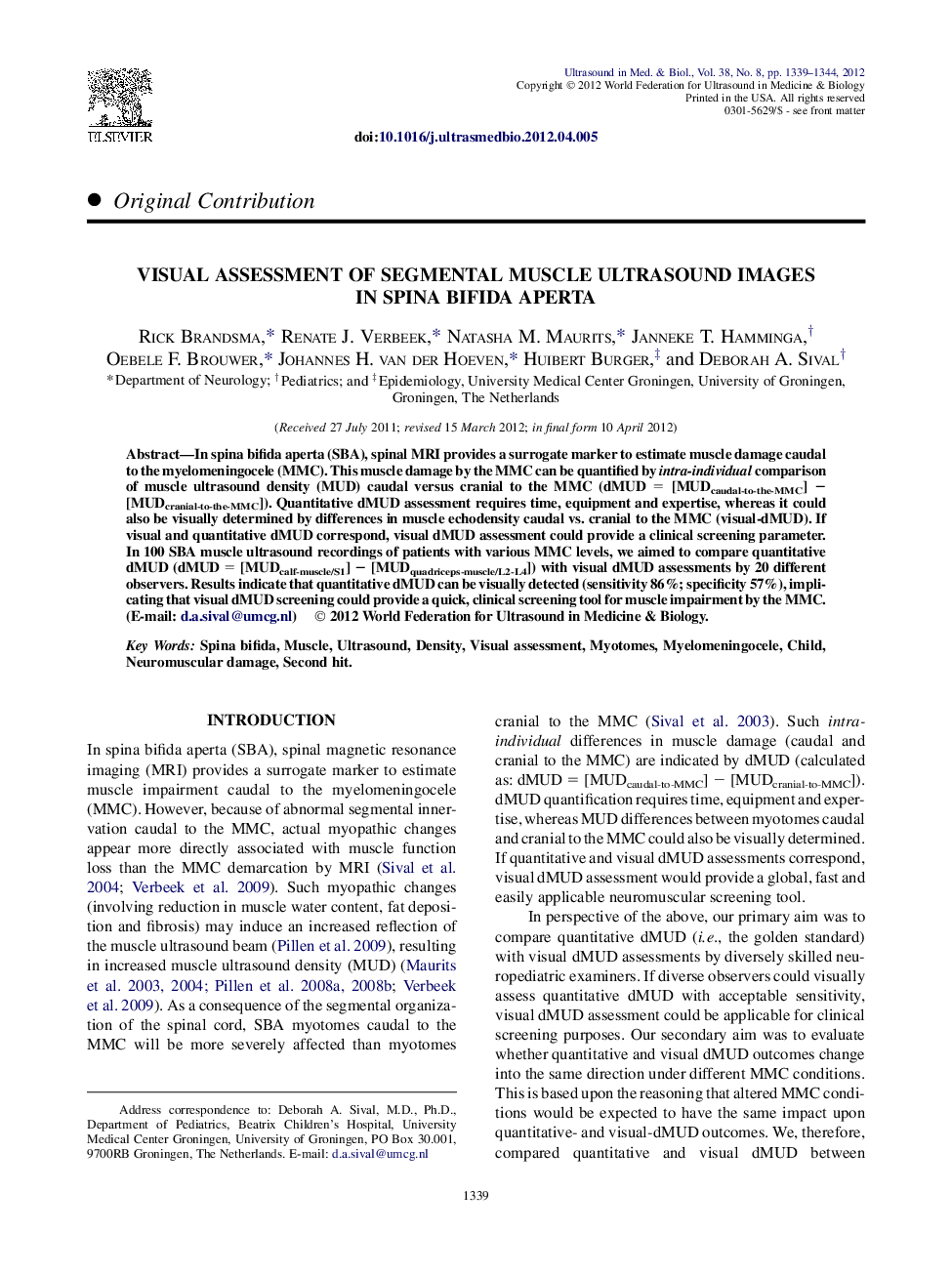| Article ID | Journal | Published Year | Pages | File Type |
|---|---|---|---|---|
| 1760722 | Ultrasound in Medicine & Biology | 2012 | 6 Pages |
Abstract
In spina bifida aperta (SBA), spinal MRI provides a surrogate marker to estimate muscle damage caudal to the myelomeningocele (MMC). This muscle damage by the MMC can be quantified by intra-individual comparison of muscle ultrasound density (MUD) caudal versus cranial to the MMC (dMUD = [MUDcaudal-to-the-MMC] â [MUDcranial-to-the-MMC]). Quantitative dMUD assessment requires time, equipment and expertise, whereas it could also be visually determined by differences in muscle echodensity caudal vs. cranial to the MMC (visual-dMUD). If visual and quantitative dMUD correspond, visual dMUD assessment could provide a clinical screening parameter. In 100 SBA muscle ultrasound recordings of patients with various MMC levels, we aimed to compare quantitative dMUD (dMUD = [MUDcalf-muscle/S1] â [MUDquadriceps-muscle/L2-L4]) with visual dMUD assessments by 20 different observers. Results indicate that quantitative dMUD can be visually detected (sensitivity 86%; specificity 57%), implicating that visual dMUD screening could provide a quick, clinical screening tool for muscle impairment by the MMC.
Related Topics
Physical Sciences and Engineering
Physics and Astronomy
Acoustics and Ultrasonics
Authors
Rick Brandsma, Renate J. Verbeek, Natasha M. Maurits, Janneke T. Hamminga, Oebele F. Brouwer, Johannes H. van der Hoeven, Huibert Burger, Deborah A. Sival,
